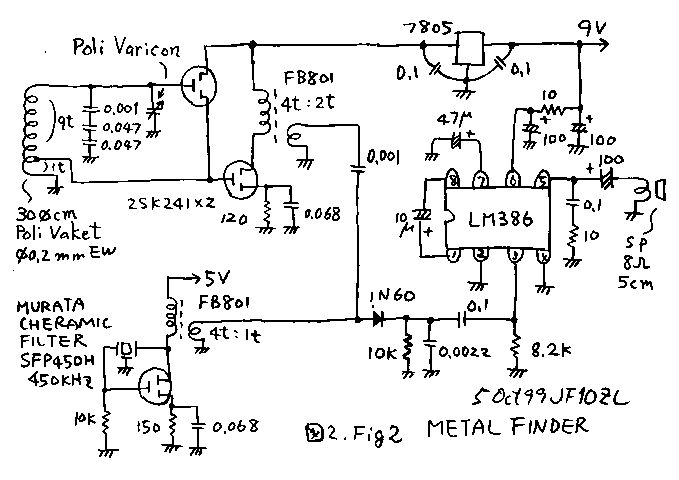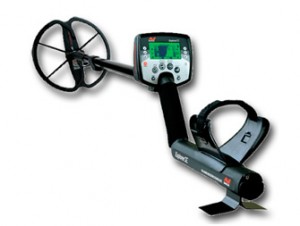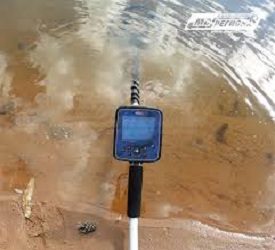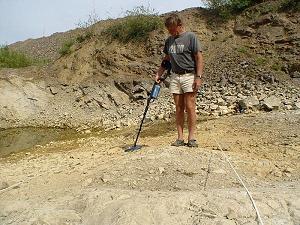Underwater detection In the category Metal Detectors more articles and learn more information about Underwater detection Reviews Price Specifications Features Image manuals videos Accessories All this in metal detectors for gold.
Underwater detection
Underwater metal detecting is practiced by very few people, and this, for several reasons:
-The most obvious is that everyone does not live near the coast
-The second is that it requires expensive hardware
-Finally she is still afraid that the water is incompatible with electronic equipment!
Also be aware that underwater detection is different from practice called the beach combing. Indeed, the beach combing is the practice of metal detecting on the beach, in contrast to the aquatic sub detection which takes place beneath the surface of the sea. Note however that you can practise it in lakes, rivers or any other place where water is present, at the moment you’ll have assimilated some concepts which will follow.
We separate this tutorial into two major parts, the detection on the submerged part of the beach and finally prospecting so-called underwater and will require diving equipment most of the time (except for the shallow funds where snorkeling can be practiced concurrently with metal detecting).
I – Underwater detection from the edge of the beach
The first important thing to know is that all metal detectors are not watertight, even isolated with House, your frying pan material risk big. As the practice is not widespread, there are only few detectors on the market. On the other hand, they have the merit to exist and are versatile enough to be interested. Where you’d be an ACE of the seal, be aware that your traditional detector can operate up to a depth of 50 cm.
The second extremely important thing to note is that under water the ground effects are omnipresent, if you do not know what is a ground effect please refer to our glossary of metal detecting. It is therefore obvious that very few traditional leisure detectors (type ACE250 etc…) will be able to be effective in these conditions. Unless, of course, have a setting to limit the effects of soil. Be aware that if you even try the experience, you might return empty-handed. The metal detector will then ring the effects of soil and spend your day to dig for nothing.
If you want to experiment and thereby acquire an able to prospect under the water detector, two categories of stoves are at your fingertips. Conventional detectors and pulse induction detectors. If you want to learn more about the different types of metal detectors I invite you to read our eponymous article.
-Dynamic or static detectors: these are conventional detectors with the advantage of being totally waterproof and especially insensitive to the effects of soil. They are usually supplied with a waterproof headphones and allow you to prospect up to 60 meters deep on average. Moreover their price is generally accessible.
-The pulse induction detectors. They are the rolls because absolutely do not fear the effects of soil. On the other hand, their disadvantage the more obvious is that they do not allow discrimination. They will detect everything and anything (hooks, waste…). Keep however in mind that marine soils are very polluted and especially that this type of metal detectors will allow you to go deeper, up to 70 meters. Are stoves all designated for underwater exploration.
Detection practice usually between 15 and 20 metres from the beaches, this is that tourists have fun summer and therefore lose their jewelry (rings, bracelets…).
II – The underwater detection or deep
The first thing to keep in mind is that the ocean can be very dangerous. Therefore never leave prospect alone, always be accompanied during your outings detection.
To practice this type of detection of leisure need you of course a pulse induction detector, but especially any diving equipment. In addition you must already have some experience in this area.
Attention to local wildlife, especially if you detect in exotic countries.
III – The material
-A capable of operating underwater metal detector.
-For winter adequate to combat clothing against the cold (combination…)
-Shoes for you protect Vives (boots, sandals…)
-A Retriever type «egoutoire» which will allow you to overcome the visibility you will not once stirred sand. Indeed, its holes let the water and sand so as to keep only the jewel or the currency.
Cleaning: it is very important to rinse profusely your metal detector with fresh water after use.
httpv://www.youtube.com/watch?v=9xxruKbGeOU
Related Articles
- Teknetics Delta 4000 Metal Detector Test Garden Reviews
- Should invest in the metal detector used Fisher?
- Types of ground penetrating radar
- lorenz deepmax x6 in the expanded configuration
- Lorenz Deepmax
- Repair of XP Gmaxx coil
- What is the difference between a professional metal detector
- Ancient Alexandria and archaeological treasures
- amazing finds with metal detectors best places to metal detect
- pinpointer reviews














